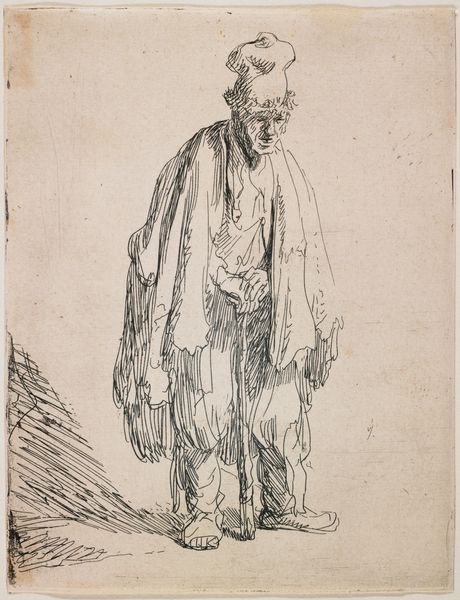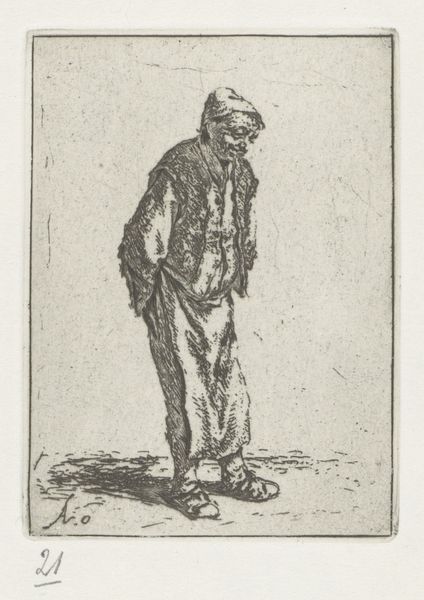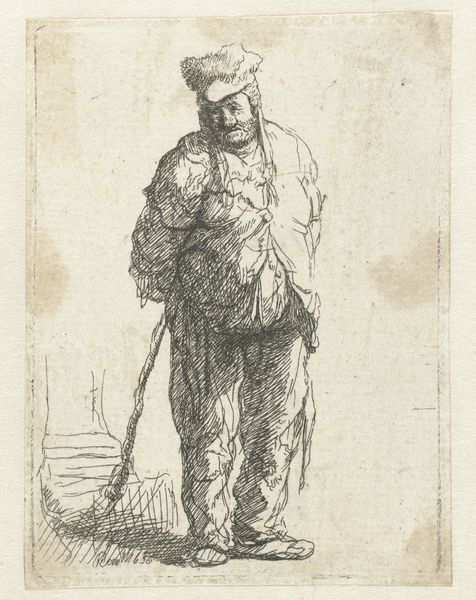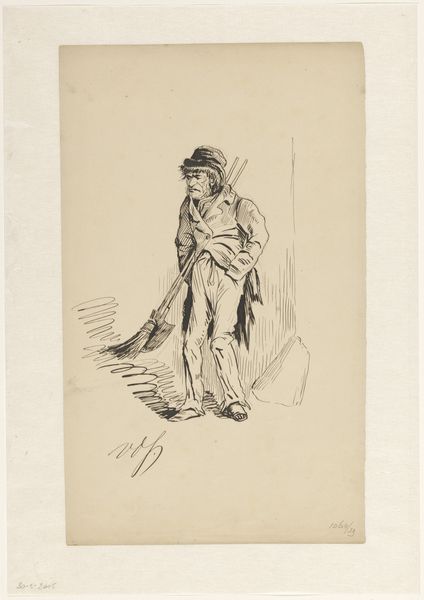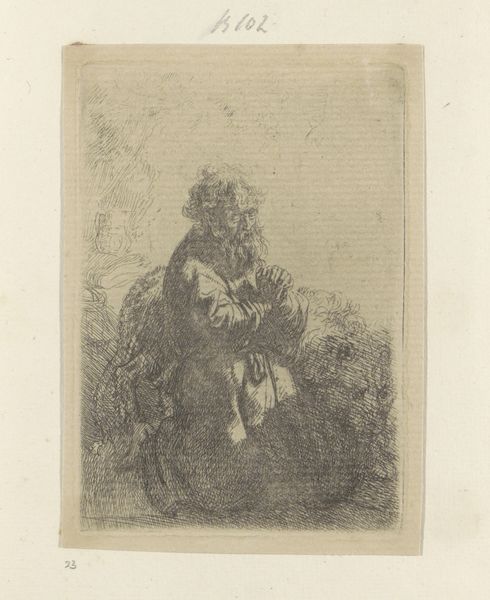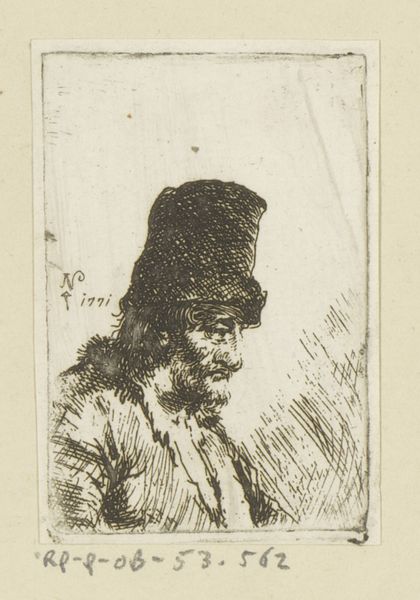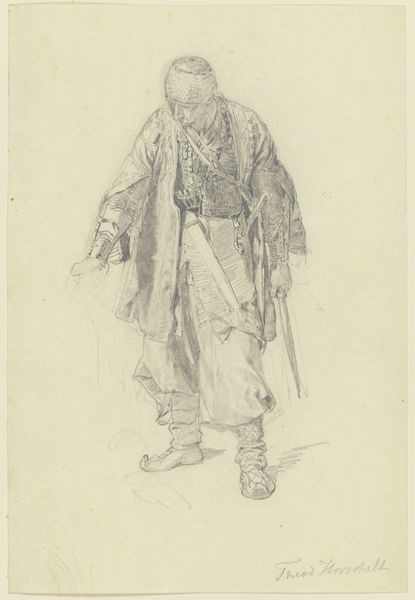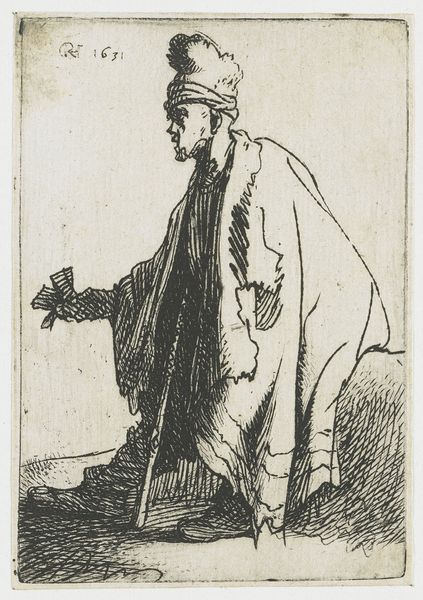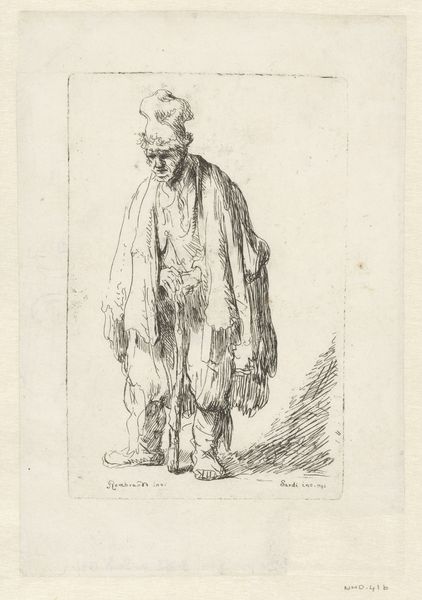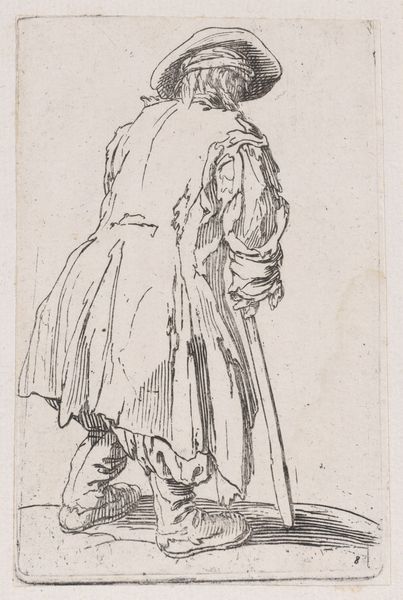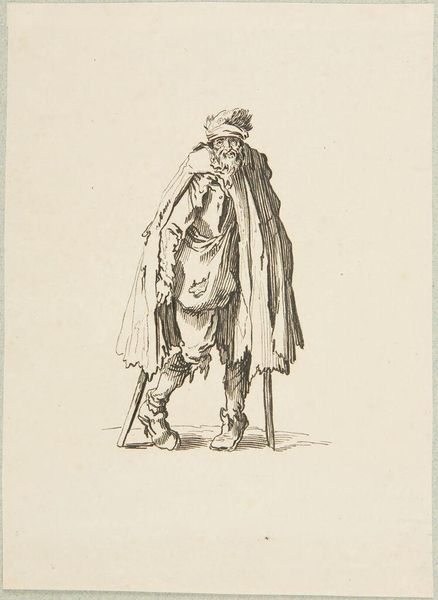
print, etching
#
portrait
#
narrative-art
#
baroque
#
dutch-golden-age
# print
#
etching
#
figuration
Dimensions: height 114 mm, width 66 mm
Copyright: Rijks Museum: Open Domain
Curator: Here we have "Beggar with a Wooden Leg," an etching attributed to Rembrandt van Rijn, created sometime between 1628 and 1808. It's currently held at the Rijksmuseum. Editor: Immediately striking. The density of line work gives the figure a strong, almost melancholic presence. There's a sense of downward movement reinforced by the bowed head and reliance on the crutch. Curator: Yes, and that density speaks to the labor involved in the etching process itself. The beggar, his very condition of needing to rely on a prosthesis is directly related to labor, social inequality, the economic structures of 17th Century Netherlands. The printing process replicates and circulates that imagery further and that amplifies its social implications. Editor: The etched line articulates the rough textures of the man's garments and skin. It is very much focused on shape and form, building volume through tonal variations with the hatching and cross-hatching marks defining this sense of gravity to it all. Curator: Consider the market for these prints too. They weren’t exactly 'high art.' These etchings were affordable, accessible goods. So this representation of poverty circulates amongst those who perhaps aren't in such a difficult place, becoming a consumable image, an interaction of class that occurs in this material exchange. Editor: Definitely. The work offers such careful study of form that serves as a point of entry into Rembrandt's observation of a certain man. I note how the face is hidden in shadow, and how that directs our gaze down to the broken body of a person whose dignity, we understand, has been diminished. Curator: I agree, there's an intimacy fostered by that direct gaze downward; by the social dynamics, that also make it a commodity. The circumstances of its production, the materials themselves, are critical to its social resonance. Editor: Perhaps its visual construction allows that accessibility to resonate within different cultural landscapes and economic circumstances. Looking closely here allowed us to appreciate not only Rembrandt's skill, but also consider some rich and fascinating aspects around the visual structure of this print. Curator: Indeed. Engaging with the work from the perspective of its own creation opens doors to a greater understanding of its broader social and political presence.
Comments
No comments
Be the first to comment and join the conversation on the ultimate creative platform.
